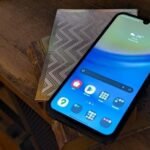Since the start of the Covid-19 pandemic, the importance of accessible and reliable testing to screen for the virus has become increasingly evident. Since the outbreak, testing has become increasingly important in controlling the virus. It enables the diagnoses of cases, facilitates the identification of cases for isolation, and provides prevalent estimates to guide intervention and resource planning.
If you have had a Covid-19 test, it will have likely been either a lateral flow test (LFT) or a polymerase chain reaction (PCR) test. While both tests take samples the same way and can detect the SARS-CoV-2 virus, they are very different.
click here – What Are The Different Kitchen Styles?
PCR testing
The PCR test is a diagnostic test. It screens for the virus’s RNA in a swab sample taken from a person’s throat and nose. It can detect the genetic material in the body before symptoms present, and tell whether someone has the virus very early on.
PCR tests provide a reliable indication of who is infected so they can isolate and contact those they’ve been in contact with. One drawback of this type of testing is that the tests are sent to a laboratory for analysis. This means it can take days for someone to receive their results.
PCR tests are typically used if someone is displaying symptoms or confirming a positive lateral flow test.
click here – Sleeping when you Have Psoriasis – What you Need to Know
How to get a PCR test?
If you are an essential worker, have been asked to get tested by your hospital or GP, have coronavirus symptoms or have been in contact with someone who has tested positive, you can get a free PCR test. All you need to do is register online to make an appointment at a Covid-19 test centre, or order a home test.
LFT testing
LFT testing also involves swab tests. However, they are antigen tests and, therefore, not the same as a PCR.
While a PCR test detects viral genetic material, LFT testing instead detects certain proteins in the sample that are specific to Covid-19. A major benefit of LFTs is that people can do them at home and receive their results in 15 to 30 minutes. However, while they are fast at returning a result, they are not as accurate as PCRs.
LFTs are generally used by people who don’t have any symptoms. They are used by those who routinely test themselves, or who have recently returned to the UK.
How to get an LFT?
You can get LFTs for free from pharmacies, local hubs, or you can order home kits online. However, you cannot use a free LFT from the NHS for international travel. It therefore must be purchased from a private healthcare provider like Medicspot.
If your LFT result is positive, you must take a PCR test to confirm the result and self-isolate.
Taking a Covid test
An LFT and PCR test both require a swab taken from the throat and nose. They come with easy to follow, step-by-step instructions. There is also information about what to do if your test comes back negative, positive, or void.
For an LFT, once you’ve swabbed your nose and mouth, insert the cotton swab into the capsule of liquid. Mix the contents of the capsule and place some droplets onto the test strip. Wait around 15 minutes before checking your result.
If it’s positive, you must arrange a follow-up PCR test to confirm the result. Meanwhile, the PCR swab is sent to a laboratory, where it is analysed before the results are sent to you, usually by email. You can expect to receive your PCR test result within 48 hours. If your result is positive, you must follow the latest self-isolation advice.
While testing for Coronavirus may not always be a pleasant experience, it is rapidly becoming a normal part of life. Whatever your reason for having an LFT or PCR test, getting the test done promptly and efficiently, will ensure that you are doing your bit to help keep yourself and those around you as safe as possible.





